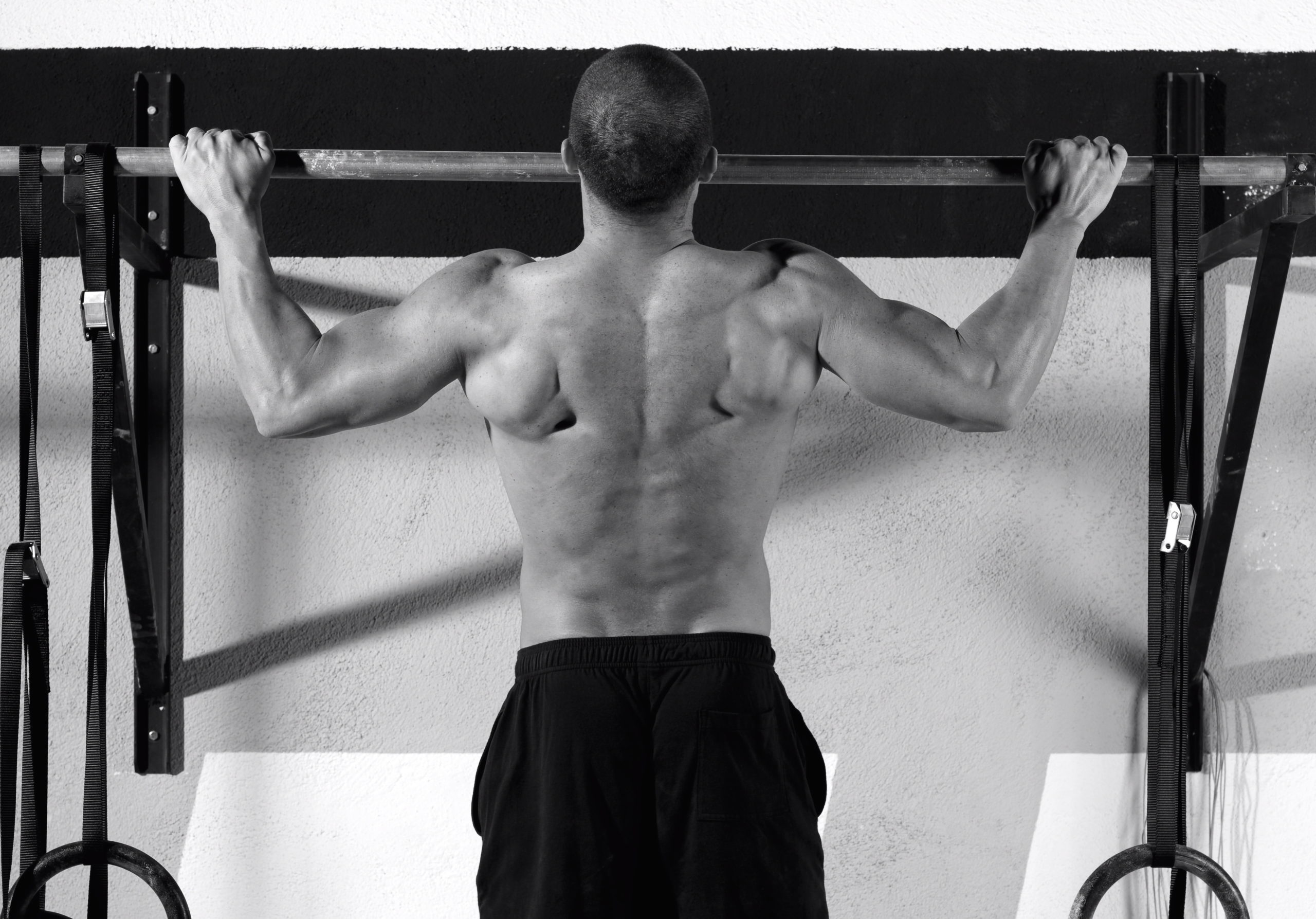When I was interviewed for my first job as a personal trainer, the manager asked what I thought was a bench mark upper body exercise. It didn’t take long for me to come up with an answer. The push and pull up were the first to jump to my mind. Most people can do at least one push up, but not many can do even one pull up. Why is this? With the pull up, you don’t have any contact with the ground and all of your weight is being held by your hands. It’s a battle with gravity that many end up losing. It requires a tremendous amount of effort from a multitude of muscles including lats, biceps, abdominals and forearm muscles. Women in particular tend to have to work hard to build upper body strength, which makes it more difficult for them to perform this action. What are some ways that we can beat gravity and be able to pull the body up? One key aspect is a good strength to weight ratio. The less you weigh, the less work you must do to do a full pull up. The other is, of course, practice!
PULL UP 101
The No. 1 way that you can get good at something is quite simple, practice the movement. Since most people reading this can’t do a pull up, I am going to show you ways to work yourself up to doing a full pull up.
JUMP UPS
First things first, you need a bar. You can find one at your local gym, playgrounds or you can even buy one that fits in your door way. Once you have a bar you can begin by doing a “jumping” pull up. Do this by placing your hand around the bar, being sure to wrap your thumb and lock the grip. Place your hands just wider than the shoulders. Hand spacing can vary from person to person as well as what muscles you want to work on. Once your hands are in place, jump as you pull yourself up. This helps you get a feel for the movement without doing it.
CHIN HOLDS
Once you get a feel for the jumping pull up, you can try doing a hang where you hold the position of having your chin over the bar. Do this by either jumping or using a step to get your chin over the bar. When you are in position, you want to hang and hold for as long as possible.
BAND ASSISTED
The next step would be using a band for assistance. These bands come in all sizes and tensions. The more tension, the more assistance the band will give. Wrap the band around the bar so that it is secure. Place the knee or foot in the strap that is created with the band. Once in place you can begin to do a pull up with assistance. Gradually decrease the tension by changing bands to make it more difficult. After you have done this for a few weeks, you can attempt your first pull-up! If you can’t do it, go back to working with the resistance bands. Be sure to do as many reps and sets as you can handle in a session.
PLAN FOR SUCCESS: A GUIDELINE FOR THE BEGINNER
WEEK 1-2: Get familiar by doing jumping pull ups.
WEEK 3: Practice static holding of the chin over the bar. Try and build your time to 30 seconds.
WEEK 3-5: Begin incorporating resistance bands for assistance. Gradually work your way down in band tension.
WEEK 6: Attempt a full pull up and if at first you don’t succeed, try, try again!
This is a general guideline; some people may go faster or slower through the progression.
Good luck!
Related articles:
Is Sitting Down Causing You More Harm Than Good?
In A Funk? Use Creativity To Brighten Your Mood!
Blossoming Through The Lens: Meet Susannah Herndon Peddie
7 Spices To Improve Your Health And Your Meals

